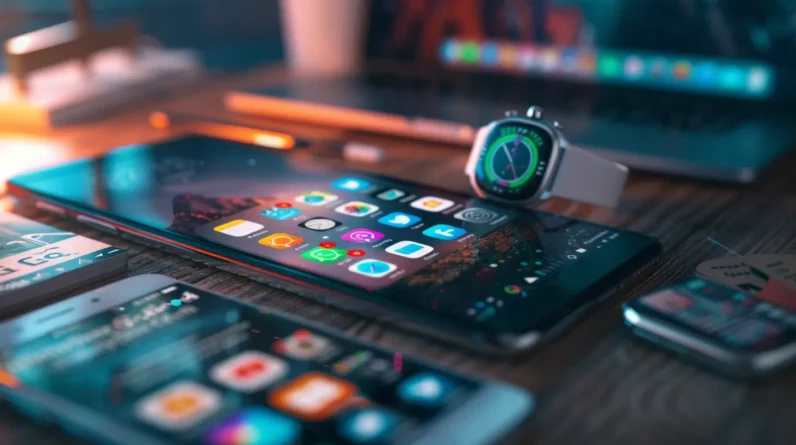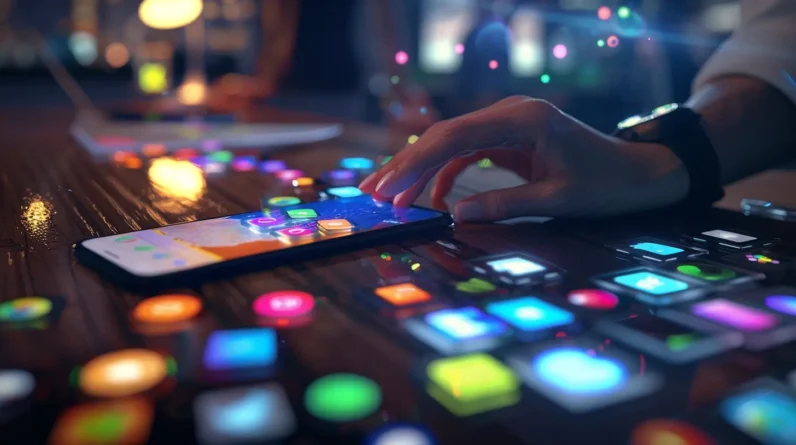
Smart devices shape our behavior in profound yet complex ways. We’re seeing clear benefits: enhanced productivity through personalized learning algorithms, streamlined decision-making with instant recommendations, and expanded social connectivity across global networks. However, we’re also facing significant drawbacks: privacy concerns with 2.5 quintillion bytes of daily data generation, mental health challenges from addiction-like behaviors, and diminished face-to-face social skills, particularly among younger generations. With 73% of consumers checking devices before purchases and 85% of communications occurring digitally, we can’t ignore their impact. Understanding these transformations will help us navigate this new technological landscape more effectively.
Reshaping Daily Decision Making
The integration of smart devices into our daily routines has fundamentally altered how we make decisions, from choosing restaurants to managing our schedules. We’ve become increasingly dependent on algorithmic recommendations and data-driven insights to guide our choices, often prioritizing convenience over traditional decision-making processes.
Our smart devices now influence when we wake up, what route we take to work, and even how we regulate our home’s temperature. Research indicates that 73% of consumers check their phones for recommendations before making purchases, while 62% rely on smart calendars to optimize their daily schedules. This algorithmic guidance has created a dual effect: we’re making more informed decisions based on data analysis, but we’re also becoming less likely to trust our intuition or explore options outside our devices’ suggested parameters.
Privacy in a Connected World
Smart devices collect over 2.5 quintillion bytes of personal data daily, raising significant questions about privacy in our interconnected world. We’re facing unprecedented challenges as our devices track, analyze, and share our behaviors, preferences, and locations. The integration of IoT devices into our homes and workplaces has created a complex web of data vulnerability points.
Key privacy concerns we must address:
1. Data sovereignty – who truly owns and controls our personal information
2. Third-party data sharing among device manufacturers and service providers
3. Potential surveillance through always-on microphones and cameras
4. Cybersecurity vulnerabilities in interconnected device networks
We’re witnessing a fundamental shift in personal privacy as our digital footprints expand exponentially. Understanding these privacy implications becomes essential as we navigate the balance between convenience and data protection in our smart device ecosystem.
Mental Health Impact
As we immerse ourselves deeper into smart technology, mounting evidence suggests significant psychological effects from constant device interaction and connectivity. Studies reveal dual impacts on mental wellness: while smart devices can reduce stress through automation and provide mental health resources, they’re also linked to increased anxiety, depression, and addiction-like behaviors.
We’re seeing disturbing trends in dopamine-driven feedback loops from notifications, social media integration, and instant gratification features. Smart device usage correlates with disrupted sleep patterns, shortened attention spans, and heightened stress responses. However, when properly managed, these same devices offer powerful tools for mindfulness, therapy access, and emotional regulation. The key lies in understanding both the neurological mechanisms at play and implementing strategic usage boundaries to harness benefits while minimizing psychological risks.
Digital Learning and Productivity
While traditional learning methods remain valuable, connected devices have revolutionized how we acquire and retain knowledge in both educational and professional settings. We’re experiencing unprecedented access to information and productivity tools that enhance our learning capabilities and workflow efficiency.
Key advantages of digital learning and productivity tools include:
1. Adaptive learning algorithms that personalize content delivery based on individual progress and comprehension rates
2. Cloud-based collaboration platforms that enable real-time knowledge sharing and project coordination
3. Productivity tracking applications that help optimize time management and task completion
4. Interactive multimedia resources that engage multiple learning styles simultaneously
These technological advances don’t just streamline our work processes; they fundamentally alter how we process and retain information. By leveraging these tools effectively, we’re able to achieve higher levels of productivity while maintaining deeper engagement with learning materials.
Social Interaction Patterns
The digital revolution that enhanced our learning capabilities has simultaneously transformed how we connect and communicate with others. We’re witnessing fundamental shifts in social dynamics, as smart devices mediate an increasing percentage of our interpersonal interactions. Research shows that 85% of our daily communications now occur through digital channels.
This transformation manifests in both positive and negative ways. We’ve gained unprecedented ability to maintain relationships across distances and time zones, while expanding our social networks exponentially. However, we’re also experiencing diminished face-to-face interaction skills, with studies indicating a 40% reduction in direct social engagement among younger generations. The phenomenon of “phubbing” – snubbing others by focusing on our phones – has emerged as a significant barrier to meaningful personal connections, affecting both casual and intimate relationships.
Conclusion
Smart devices have woven themselves into the fabric of our lives like digital threads, fundamentally altering how we make decisions, learn, and connect. We’ve examined both the empowering aspects of increased productivity and digital literacy, alongside concerning implications for privacy and mental well-being. Moving forward, we must actively shape our relationship with these technologies, ensuring they enhance rather than diminish our human experience.







